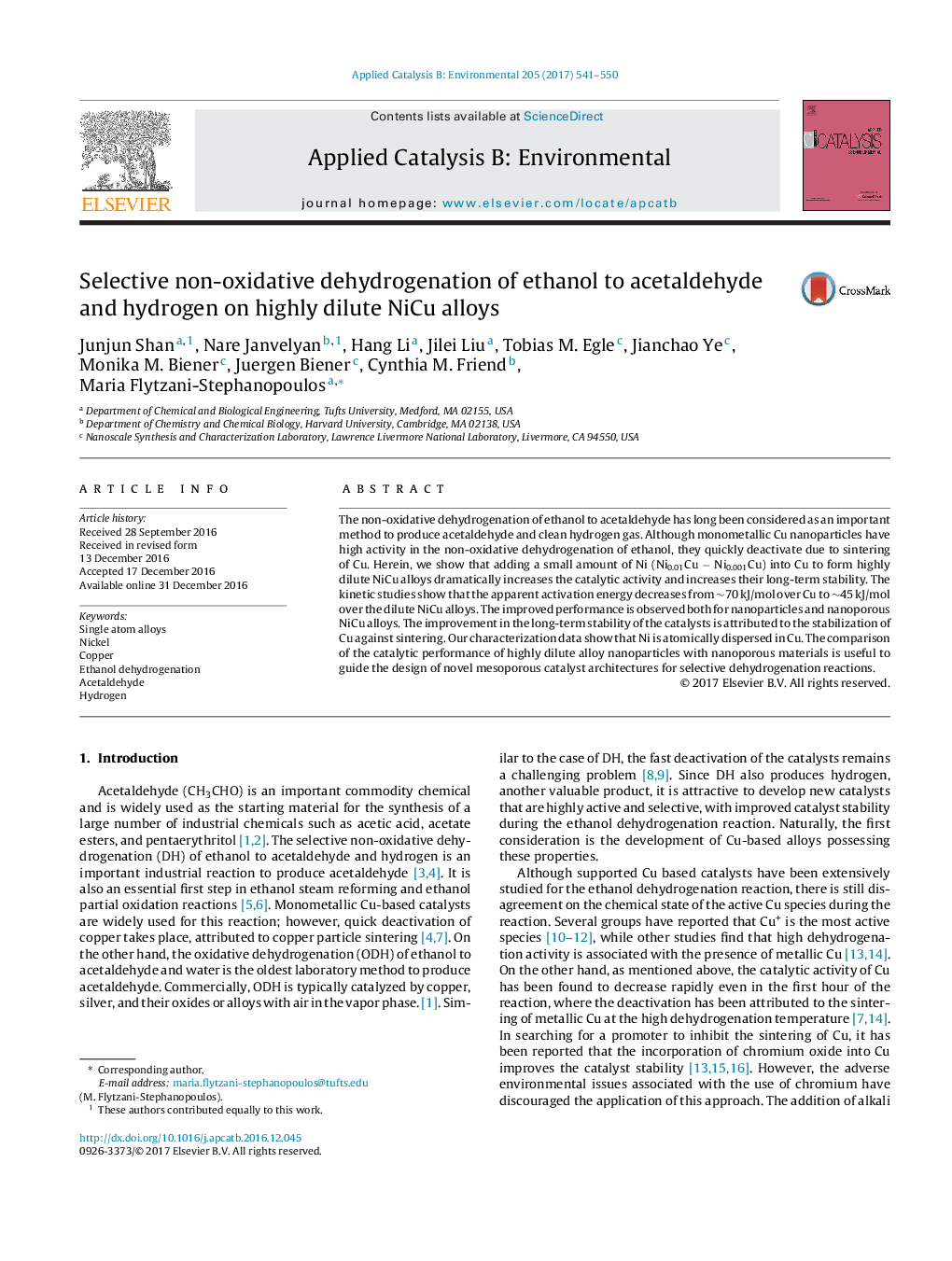| کد مقاله | کد نشریه | سال انتشار | مقاله انگلیسی | نسخه تمام متن |
|---|---|---|---|---|
| 6454386 | 1418815 | 2017 | 10 صفحه PDF | دانلود رایگان |

• The non-oxidative dehydrogenation of ethanol to acetaldehyde and hydrogen takes place selectively on highly dilute NiCu alloys.
• Nickel is atomically dispersed in the Cu matrix, and improves both the activity and the stability of metallic copper in the ethanol dehydrogenation reaction.
The non-oxidative dehydrogenation of ethanol to acetaldehyde has long been considered as an important method to produce acetaldehyde and clean hydrogen gas. Although monometallic Cu nanoparticles have high activity in the non-oxidative dehydrogenation of ethanol, they quickly deactivate due to sintering of Cu. Herein, we show that adding a small amount of Ni (Ni0.01Cu − Ni0.001Cu) into Cu to form highly dilute NiCu alloys dramatically increases the catalytic activity and increases their long-term stability. The kinetic studies show that the apparent activation energy decreases from ∼70 kJ/mol over Cu to ∼45 kJ/mol over the dilute NiCu alloys. The improved performance is observed both for nanoparticles and nanoporous NiCu alloys. The improvement in the long-term stability of the catalysts is attributed to the stabilization of Cu against sintering. Our characterization data show that Ni is atomically dispersed in Cu. The comparison of the catalytic performance of highly dilute alloy nanoparticles with nanoporous materials is useful to guide the design of novel mesoporous catalyst architectures for selective dehydrogenation reactions.
Figure optionsDownload high-quality image (109 K)Download as PowerPoint slide
Journal: Applied Catalysis B: Environmental - Volume 205, 15 May 2017, Pages 541–550